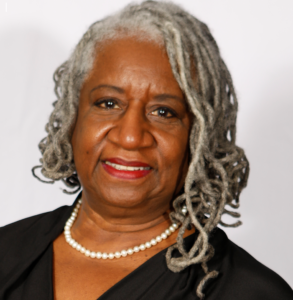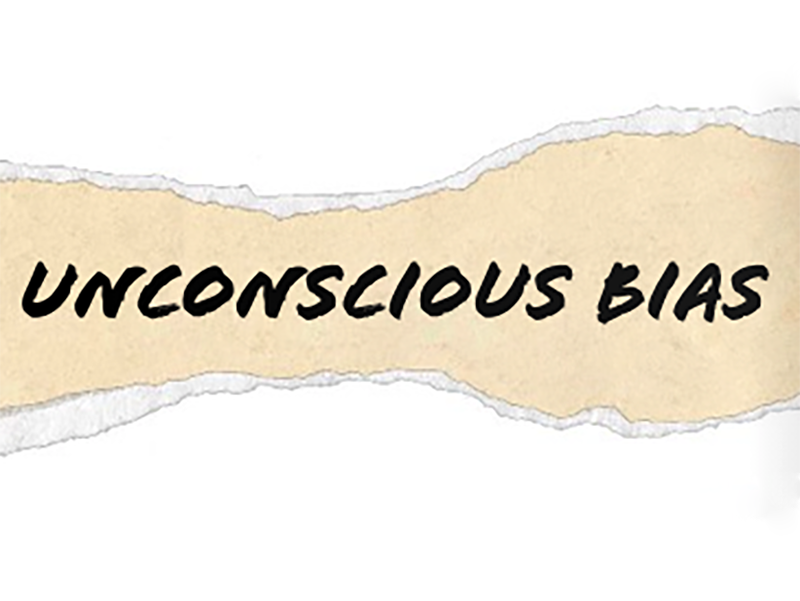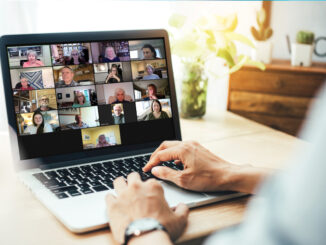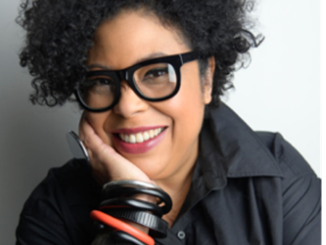Dear Emeritus:
I recently conducted a study, and I recognized something about myself that dismayed me and made me wonder if I have ever biased a focus group or findings in a client report. Since then, I’ve reflected on my attitude and behavior, and I’ve gained some self-knowledge. Has this ever happened to you—where you were surprised by an unconscious bias or attitude or even a value? How have you handled this? When you realized bias in yourself, how did you react? Did you follow up in any way?
—Dismayed in Denver
Dear Dismayed:
Betsy Bernstein Responds
 I have never knowingly biased groups or findings in a client report. But knowingly is the key word. I applaud your sensitivity to things that you may be doing unconsciously. Awareness is the beginning; planning, from the outset of the project, can help minimize bias. Practice objectivity throughout the process, not just in reporting.
I have never knowingly biased groups or findings in a client report. But knowingly is the key word. I applaud your sensitivity to things that you may be doing unconsciously. Awareness is the beginning; planning, from the outset of the project, can help minimize bias. Practice objectivity throughout the process, not just in reporting.
Here are some practices to consider:
Do your homework. For me, every project begins with a full understanding of the target, category, and issue at hand. Listening to the client’s briefing is a good start. But in addition, I will also do some investigating on my own. This sensitizes me to questions or issues that may arise that the client may not have mentioned. I can then bake this broader view into the research design through recruiting and development of discussion guide exercises.
Foster an open environment in the actual research. At the outset of every session, reinforce to all the importance of hearing diverse responses.
Be sure your questions are objective. Much has been written about keeping questions neutral. Not: “Tell me about this beautiful package.” Rather: “How does this package make you feel?” Also, you need to remain neutral. Your job is to control the process, not the content. Letting respondents in on your feelings can influence the session in so many ways.
Recognize that even your nonverbals can send a message. I worry sometimes that the nod or “uh-humm” I give to one person that was meant to signal “thanks for talking/keep talking” gets interpreted by another as affirmation of the right answer, discouraging other perspectives. Or that my body language—such as turning away from a dominant respondent to discourage their behavior—can also stifle presentation of opinions. So, be sensitive to your actions. Seek out the quiet individual. Encourage the opposite point of view/perspective. Challenge a group to ensure all sides are heard.
Practice unconditional positive regard (UPR). Understand and respect that even the loud, dominant respondent you may cringe at hearing talk again can have a perspective that is valid and valuable.
In reporting, listen to your gut. There are certainly the major themes that come through loud and clear. But, it is possible there’s a gem that is only said by one person that does make sense. Don’t ignore that gem. After all, this isn’t quant, and these nuggets can be meaningful springboards to new ideas.
Build a partnership with your client. This should have happened throughout the research process, and it should continue during the analysis. Given their knowledge of the category/industry, they may hear things differently from you. Make sure your research partner is aligned on the findings before they are distributed to the broader client community.
May many more benefit from your ethical sensitivity and quest to do the right thing.
Betsy Bernstein, betsy@bernsteinresearchgroup.com
Dear Dismayed:
Barbara Hairston Responds
 Let me start by reassuring you that “there is no shame in your game” because it is a fact for all of us that wherever we go, we take ourselves with us. That baggage includes values, attitudes, and yes, unconscious biases and frequently implied biases. I will also make the leap and assume that you are a trained qually, which is why that question even comes up and why you might second-guess yourself. For that, you should be proud. I think we all need to do a deep dive from time to time and understand that our own baggage can unwittingly impact what we focus on or how we understand what is said, and how we report it. It is, after all, qualitative research.
Let me start by reassuring you that “there is no shame in your game” because it is a fact for all of us that wherever we go, we take ourselves with us. That baggage includes values, attitudes, and yes, unconscious biases and frequently implied biases. I will also make the leap and assume that you are a trained qually, which is why that question even comes up and why you might second-guess yourself. For that, you should be proud. I think we all need to do a deep dive from time to time and understand that our own baggage can unwittingly impact what we focus on or how we understand what is said, and how we report it. It is, after all, qualitative research.
I can recall a time, early in my career, when conducting groups with tween-teen girls on teen pregnancy, a young girl casually mentioned that her mother was 28. I think I asked her if she said, “28.” It didn’t faze her, but being 14 and having a 28-year-old mother was out of my norm. Our groups are a nonjudgment zone, so there was no subsequent impact on the group or the report. It was a constant reminder though, about taking yourself with you into every situation. So, challenging my own normal made me a better moderator and qualitative researcher.
When I look at your question, I must admit that I lean more toward the good things that have happened when a respondent triggers something that has caused me to reflect or reassess. These are the things I’ve taken with me for the rest of my career.
I have been privileged to work in the social marketing space, working with underserved populations, discussing risky behavior. While speaking with Native Americans who lived on reservations, I was struck by a response from an older male in the group when asked what he thought contributed to behaviors like substance abuse. It was simply, “we have lost our Indianness.” What an onion to peel! His response has impacted my career and how I conduct groups and analyze findings.
I say, celebrate the fact that you second-guess yourself. Make it part of your proofing. Ask yourself if this is me, or if this is them. Am I capturing their “ness?” Because that is where the values, attitudes, and perceptions reside that impact all our findings.
Barbara Hairston, bkhairston@marketingresourcesintl.com
Dear Dismayed:
R. Harris Responds
 I can honestly say that I have never biased a focus group or findings in a report. This is not because I was such a great moderator or qualitative research consultant. It is because when I first learned to become a moderator, back in the Stone Age, giving your opinion or letting your personal attitudes and opinions impact a study was regarded as the one sin you must never, ever commit. I’ve made a few mistakes in my career, but that was never one of them. I don’t believe this happens very often, although I can remember several very rare occasions when a moderator was accused of not remaining impartial or objective. This only reinforced my determination to not let this happen to me.
I can honestly say that I have never biased a focus group or findings in a report. This is not because I was such a great moderator or qualitative research consultant. It is because when I first learned to become a moderator, back in the Stone Age, giving your opinion or letting your personal attitudes and opinions impact a study was regarded as the one sin you must never, ever commit. I’ve made a few mistakes in my career, but that was never one of them. I don’t believe this happens very often, although I can remember several very rare occasions when a moderator was accused of not remaining impartial or objective. This only reinforced my determination to not let this happen to me.
J.R. Harris, jrobharris@cs.com
Dear Dismayed:
Rick Weitzer Responds
 What you should not do is shut down your feelings about the subject because your feelings allow you to be empathic toward your respondents and give you the ability to recognize the meaning behind what they are saying.
What you should not do is shut down your feelings about the subject because your feelings allow you to be empathic toward your respondents and give you the ability to recognize the meaning behind what they are saying.
We all hold biases. But the problem about our biases is that they are—as you indicated—“unconscious.” Whether the subject matter at hand is prosaic (like toothpaste) or extremely volatile (like a political candidate), you do have opinions about these things. If you didn’t, you probably would not be a very good qualitative researcher.
How do you get on better terms with the part of yourself that you can’t see? Before you start a study, take an inventory of how you feel about the subject, so that when something comes up that either confirms your biases (known as confirmation bias—a bad thing) or gives you a sense of discomfort (known as cognitive dissonance—often a good thing), you will not be surprised.
Like journalists or therapists, we need to remain objective. Qualitative research consultants often call this “unconditional positive regard.” But imagine sitting in another seat: you are a therapist hearing a patient reveal a shocking personal story. No matter how upset you might be, you must have the discipline to show empathy on your face and then probe even more deeply just at that moment.
There are many other points in the qualitative research process where unconscious biases may emerge: developing screening criteria (do you really need people from that postal code?); writing a discussion guide (are you pushing your respondents too forcefully toward your client’s goals?); moderating (don’t act surprised about anything); and during analysis and reporting (you have the time for reflection, so do it here).
Malcolm Gladwell, who is not a fan of focus groups, writes about how, in a “blink” of an eye (actually, five seconds), people make first impressions that are often contrary to reality and reveal one’s long-held biases.
My approach is to accept my own biases. I suggest you hold onto them for more than five seconds and challenge your assumptions about your biases. For example, in a focus group, you might hear a participant say the toothpaste tastes like—what?—peanut butter? Or the candidate has told her not to get vaccinated. If so, dive in here! Accept your feelings, and then put those feelings aside.
Our job is to understand the idiosyncratic responses that provide deep insights for our clients, which we can only get to by probing deeply and sensitively, and by giving our respondents the best gift we can: Unconditional Positive Regard.
Rick Weitzer, rweitzer@prellorg.com

Do You Like This Topic?
You may be interested in this additional resource, which can be found in the QRCA Qualology Learning Hub.
“Rappers + Researchers + Realities: Exploring Unconscious Bias in Qualitative Research”




